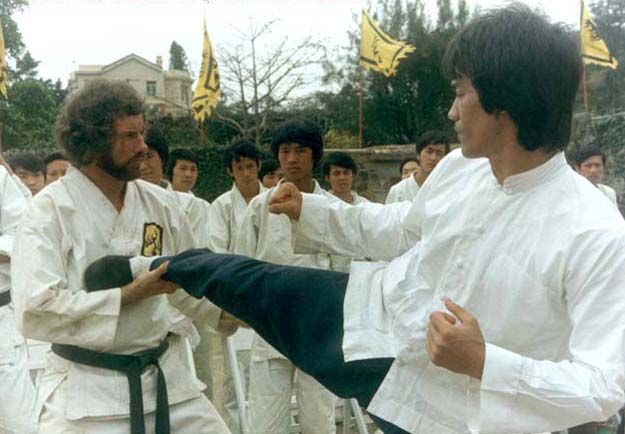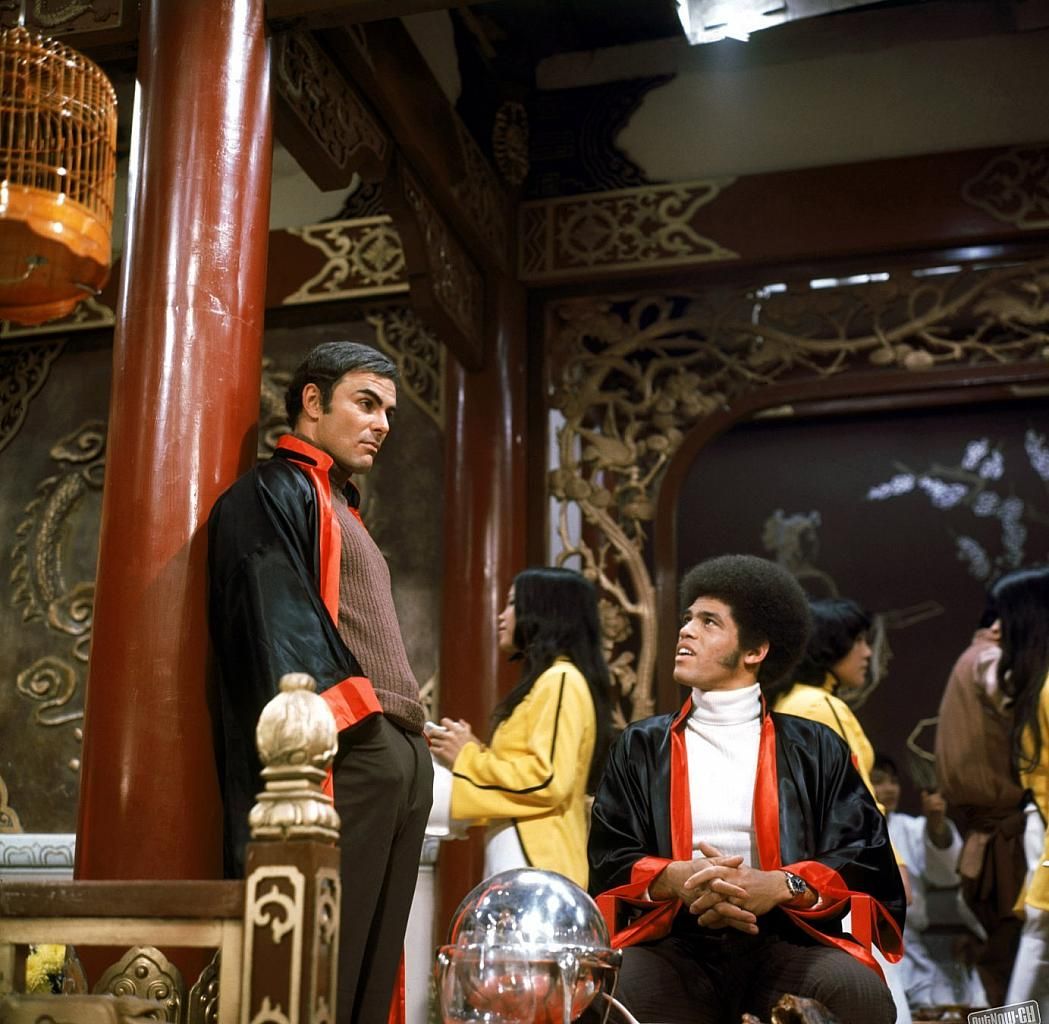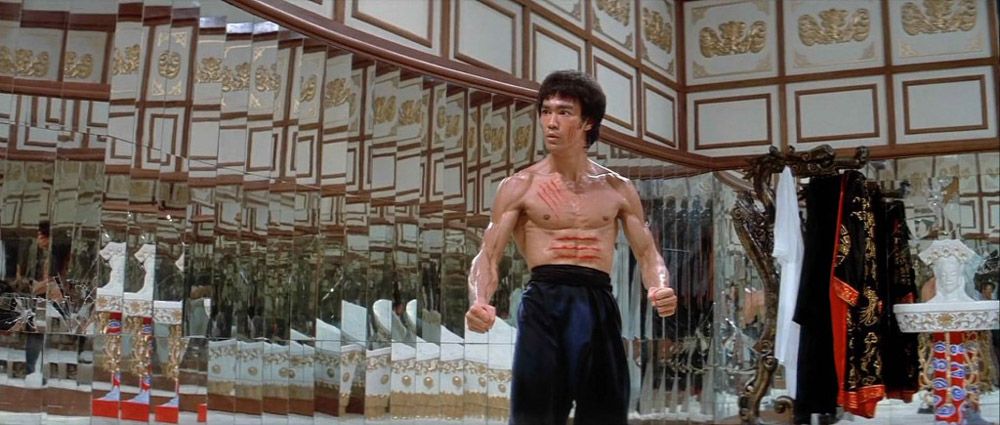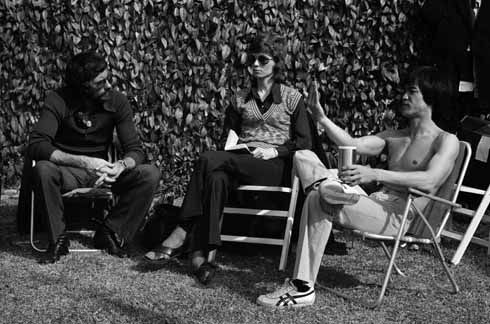More than just the most commercially successful martial-arts film of all time, Enter the Dragon is a bona fide classic of the genre. Although Hong Kong cinema produced a number of enduring films in the previous decade – among them, Come Drink With Me, The One-Armed Swordsman, King Boxer (aka Five Fingers of Death) and Bruce Lee’s first starring vehicle The Big Boss -- Robert Clouse’s 1973 film was the first to achieve recognition on an international scale, merging the frenetic action of its predecessors with a western style that gave it broader appeal. And although its propulsion of Lee to stardom was unfortunately marred by his untimely death six days before the film’s release, Enter the Dragon created a worldwide appetite for martial-arts cinema that continues to grow 40 years later.
Warner Home Video released a new 40th-anniversary edition Blu-ray for Enter the Dragon on June 11 that includes an encyclopedic collection of bonus features and behind-the-scenes material, along with an embroidered dragon patch, motion lenticular image and never-before-seen production art. Before a recent special screening on the Warner Bros. lot, Spinoff Online sat down for exclusive conversations with several members of the film’s cast and crew, including its producers, cinematographer, and Lee’s co-star and friend Bob Wall.
In addition to offering their memories of working on-set with Lee, his collaborators revealed new details about the production, and offered their perspective on the film’s longevity -- not to mention the enduring legacy of its star.
Spinoff: When you embarked on this, what were your ambitions with Enter the Dragon?
Producer Fred Weintraub: To make money. I mean, that’s what we do in the movie business. But when we do it, we cloud it with creativity. We want show that we’re very creative.
Producer Paul Heller: I’ll just say that more than Fred, I liked the process. I loved the mechanics of making a movie. But Freddie and I had been friends for many years, and he was the visionary that Ted Ashley brought out when they [Kinney National Company] bought Warner Bros. Bruce had an intensity that was so commanding, and he had it in his life -- I mean, that’s who he was. He was an amazing young man.
Cinematographer Gil Hubbs: The ambition was not that grand for the people that made the film. The ambition was to live through it (laughs). To live through the day, and in that day, try to advance in making the movie. The grand ambition, I’m sure it was there in an office some place, but Warner Bros. really was not involved at all. The producer over there, and Bruce, [wanted to] fulfill Bruce’s ambition that it was a major kung fu movie. But it didn’t really translate to the production.
Co-star Bob Wall: Bruce was my friend. We trained together for almost 11 years, and so we were martial-arts training partners, and he was a good friend. I was clear about what my part was -- I didn’t care to be an actor, I wasn’t studying acting, I was there more or less as a stunt man for Bruce. I was the one person who could take his kicks and punches repeatedly, so that’s why I took more abuse than anybody. But I did it as a friend, because I took a serious cut in pay; I had a real estate company that made me a lot of money, and for the part I got paid very minimally. But I did it because I knew I could help Bruce make the movie better. Bruce was a very realistic fighter, and he knew if he hit you for sure, fighters would look at that and know you were really getting hit. You don’t have to ask, “Was he really hitting me?” And then we were such close friends, before each scene he would say, “I’m going to break something.” “Yeah, right, you little Chinaman -- you can’t break anything.” Everybody else was scared to death of him. He knocked people down, and he hit people like a mule. But I was the world professional champion and that’s what I did.
When did you know you wanted to hitch your wagon to him, so to speak?
Heller: This was long before the film. We knew Bruce and recognized that he had a presence, and Fred before me, but we were both working at Warner Bros. as executives, and there were two projects that were designed for him. And because a Chinese person had never done a lead in any American film, he just couldn’t get them. One became the TV series Kung Fu, the other one was The Silent Flute, and both of them were played by [David] Carradine. And Bruce couldn’t stand it, and he went back to Hong Kong.
Weintraub: He was in bad shape at that point. He said, “Should I go?” and I said, “Just give me a piece of film” -- and that was the piece of film I took to Ted Ashley, and that started it. Bruce had this power -- some people have it: You walk into a room and some guy’s got it, you know? There are just people that hit you the right way. Bruce had an energy, Bruce had that coming out of him. He made mistakes because of it, but, you know, he was a guy who loved the women, loved life. I mean, who else would do a one-finger push-up at a martial-arts show? Or even try it? And he would do it.
Heller: But Fred noticed that in the Chinese films, there was always a Japanese villain. He was always a sumo wrestler or a samurai, and he was terrible and he beat up all of the Chinese guys and they finally would get him at the end. We didn’t have a Japanese villain, which is why Japan loved the movie.
Weintraub: It was the first Chinese film released in Japan, and believe it or not, the first time around, it made more money than it did in America. But it also became a classic because of the philosophical thing about defending yourself, not just fighting. We didn’t use any guns -- and we’re still looking at sequels without guns. But it’s tough, and it was a tough thing writing originally.
Heller: He was still, without a doubt, the most amazing martial artist that’s ever been. We never speeded up anything. Whatever you saw, that was Bruce.
What was the aesthetic you were aiming for? This is certainly more of a western film than the martial-arts films Bruce did previously.
Heller: Comic books played a big part in Enter the Dragon. When we first started thinking about the look of the film, there was a comic strip called Terry and the Pirates, and that became sort of the genesis of the whole look of the film. It was about a Dragon Lady and Chinese pirates, and it was a wonderful moment in time about adventure. But it has a wonderful, brilliant color scheme of golds and blues and reds, and if you think about Enter the Dragon, that’s what we did. And that was very, very conscious. It just felt like it would be very right for the film.
Hubbs: I don’t think we referenced existing martial-arts films. I had never seen one -- I had never seen a scene from a kung fu fight, and I had never seen a martial artist on film. And Bob had done an action film, Darker Than Amber, which Bruce saw and liked, and Bob was an extremely inventive, visual guy. And he also was tough. So if things weren’t going along, he would find a way to move forward -- and there were a lot of obstacles. But I don’t think that Bruce was able to express his ideal, so we just started -- started with Scene 1, started shooting, and Bob knew how to make a film, and to navigate around the obstacles in the way. And I think Bruce maybe wanted it to be more like the films they were making in Hong Kong, and I think Bob realized that for it to do well around the world, it needed to be different. It needed to have a broader story and people identify it visual to be different. So they worked very closely together; they did have many discussions and disagreements, and Bob handled them very well, and Bruce was very talented.
Weintraub: Everybody said Bruce would tell Bob what he wanted, but if you look at the other picture he directed [Way of the Dragon], you’d see he had no sense of what a director does with what he did. But Bob could take Bruce’s terrific ideas and put them on film, and that’s not an easy job to do -- how to place the cameras and where to place the cameras. And because things in Hong Kong were so different on a film -- they would shoot maybe one action film for two weeks, and it was just show up for about a minute on film. And it was scary for Bruce, but his presence was enormous. He was a shooting star; he is something that will never appear again.
How tough was it to film that climactic fight in the mirrored hall?
Hubbs: Bob came up with the idea of the mirrored room. We were at lunch at one place and we were in a boutique that had vertical mirrors like what you see on one wall, and we said, “That would be great.” But Bob came up with the concept of how to shoot it, which was very simple -- and it was a very simple scene to do, other than being in the mirrored room was very disorienting. You had to actually physically touch someone, because you might be talking to the wall. Bruce walked into mirrors, we all walked into mirrors a bunch of times.
What was Bruce like? And what was your working relationship with him like on set?
Hubbs: He was a nice guy to be around. He was fun. He was a very hard worker. He was a very talented athlete -- he could do things with his body that are indescribable. And he had a group around him … of other stunt people that he had trained, and he gave them a lot of respect. He was joking around with them a lot, but they made the movie a lot better, because Bruce had a lot of vigor in his acting and his physical ability and in his presentation of his martial arts. But if you take another person into it and fight him, that person has to have a like amount of vigor in reacting to it. Because I don’t know if you knew this, but Bruce didn’t kill everybody in the movie (laughs). They all got up and walked around. and we did sometimes Take 2 and killed them again. But I’d say most of the people that reacted from a punch from Bruce were masters at it. And that ability, and that ability to time it [was amazing]. When I looked at the film, that reaction had to be within three frames, an eighth of a second, and if it was a quarter of a second, it was wrong. And you couldn’t really tell that on the set -- but Bruce could. And if he said, “This is a miss,” we did it again.
Wall: Bruce was magnificent to be around. He was very well-read -- he was very bright -- and he was a lot of fun. He was always funny. He liked to needle people; if you were Mexican, he would say, “I don’t like Mexicans with beards.” If you said, “Well, I don’t like short Chinamen,” he would laugh his butt off. But a lot of people would be intimidated and walk away. But Bruce was a lot of fun, and he was a lot of fun to be around. He was very bright. He was kind to kids, he was a magician -- he liked to take quarters out of their ears and give it to them and that kind of thing. And so he was fun because he was interested in everything. If there was a subject he didn’t know much about, he wanted to know more about it. I knew him -- I was lucky, about 11 years, so I spent a lot of time with him.
[During shooting,] in the battle scene, for example, he said, “I want you to take the [bottle] in your right hand and try to stab me in my right pec,” and so I seriously tried to stab him in the right pec, and that was the one scene where he got cut, because he had to hit me between the wrist and the elbow, and the bottle flew away. But each time, I was getting faster in trying to stab him, he caught me [in the hand], so the bottle didn’t go anywhere and he jammed his fist into it. It was unfortunate mistiming, and both of us felt bad because we were good friends. But the reality is, you’re using real glass, and I’ve got to fall on that stuff. I went through four uniform tops -- cut the back. And once I fell on the glass, we couldn’t re-use it. It was real glass. So everything he did was very realistically oriented.
Can you remember any specific personal anecdotes that were unique to your relationship?
Wall: He liked equipment. I made him a 300-pound bag one day as a joke, because he used to tease my partner. I’d made [my partner] a 110-pound bag -- regular bags were 55 pounds, so he would tease him about “the girl’s bag,” but my partner at the time, Joe Lewis, was very proud of this bag. So I made him a 300-pound bag as a joke, and the first time he came in to get it, I pretended I was on the phone. Bruce came out and he kicked it and fell over. Joe and I jumped out and laughed our asses off. Well, Bruce didn’t like to be embarrassed, so then Bruce had a little Porsche, and we picked it up and we put it right in his driver’s seat -- so you couldn’t even get in the car! We went back in the school, and he was standing going, “I can’t drive this way!” I went and got my pick-up and took it to his house. He put it in the garage, and now everybody’s watching, so he kicks it like a mule -- and the whole garage caved in! Linda [Bruce’s wife] came out and said, “What are you doing?” Trust me, that bag never got in the house again.
Would you say that he was a better athlete or martial artist?
Hubbs: I think there was a mix of magic; he was a magician. He was a mix of athletic ability, and a mix of a gunfighter. When you see gunfighter movies, they look at each other, and then the gun’s in his hand and he’s shot. Bruce was like that -- he would look at you and pull you in, and like David [Friedman, the film’s still photographer] said, his eyes would pull in the camera, and he would decide with his eyes that he was going to hit you or kill you or whatever. And you saw that and thought, I’m not going to let him do it, and it would happen. It was over. And you were still thinking “I’m not going to let him do it” as you’re flying back. So I think it was a mixture of very dramatic, very vigorous [ability], and he was extremely confident of himself. There is no one in the world he would not be able to defeat.
Even though you knew you were trying to make a movie that would become a worldwide hit, did you have any sense at the time that Enter the Dragon would have the longevity that it has enjoyed?
Hubbs: No. Nobody did. It was going to be a good film. As we got along the road, it became evident that it was going to be a good film, but if you categorize a martial arts film like The Big Boss, we knew it was going to be better, but on a worldwide stage. But no one knew that it would be anything close to what i became. No one. Maybe Bruce. But the producers, Warner Bros., Bob and me, no. But Bruce and Linda ...





